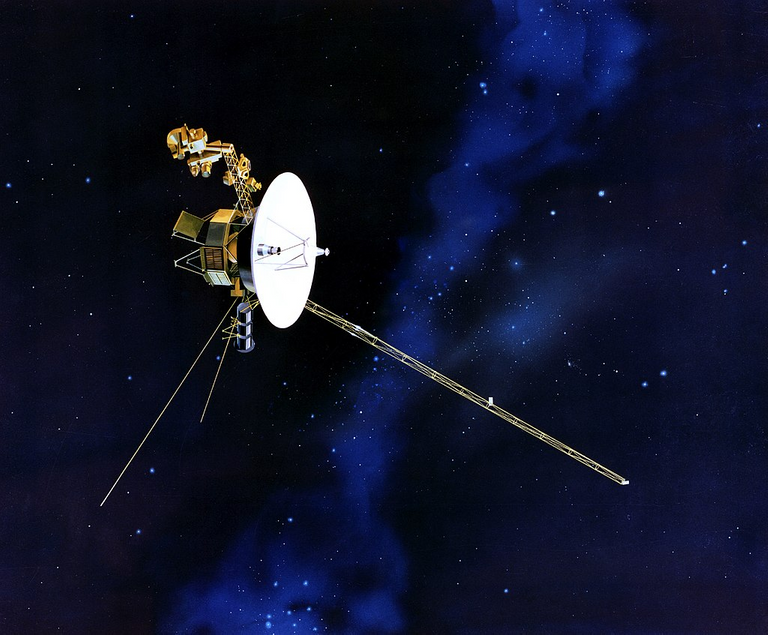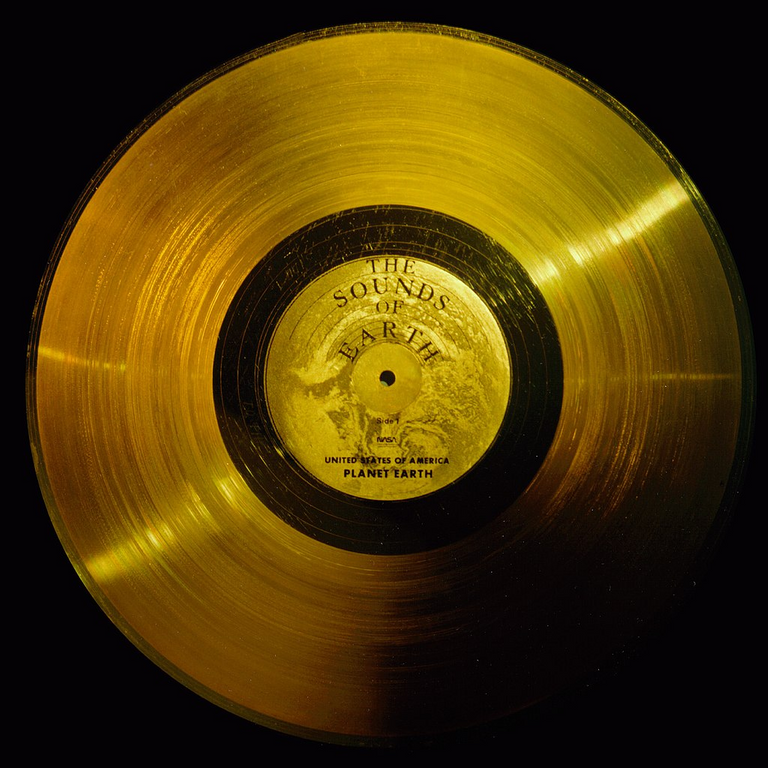La curiosidad y el legado. Son probamente dos de los principales factores que han guiado al hombre a reinventarse en el transcurso del tiempo. Ambos conceptos están claramente marcados en uno de los inventos más fascinantes en la historia de la humanidad, como lo son las sondas Voyager 1 y 2.
Un proyecto que espacial de la década de los sesenta, enfocado primeramente a brindar datos más exactos acerca de Júpiter y Saturno, obteniendo imágenes más detalladas de la atmosfera de Júpiter; las primeras imágenes de la erupción de un volcán en nuestro sistema solar, ocurriendo esto en una luna de Júpiter; la imagen de la tierra, conocida como “un punto azul pálido”, que inspiraría al libro de Carl Sagan, todo esto por parte de la sonda Voyager 1.
Aunque las sondas Voyager cumplieron su objetivo, siguieron su trayecto más allá, ofreciendo la sonda Voyager 2 ha ofrecido además datos de Urano y de Neptuno. Además de lo anterior, ambas sondas han alcanzado abandonar la heliosfera producida por nuestra estrella y que recubre nuestro sistema solar, convirtiéndose así en los primeros objetos humanos en alcanzar el espacio interestelar, así como objetos humanos que mayores velocidades han alcanzado.
Aunque se esperaba dejar de obtener respuestas por parte de las sondas en el año 2020, las mismas se encuentran operativas, y aunque algunos de sus componentes han ido fallando con el transcurso de los años (lo cual tiene sentido, ya que fueron enviadas al espacio en el año 1977), se espera seguir obteniendo respuestas de ambas hasta al menos el año 2025.
Algunos de los componentes son todavía un secreto, teniéndose solo fotografías de algunos, como lo es su sistema de grabación. Sin embargo, ambas poseen en su interior lo que considero uno de los artefactos más interesantes en la historia de la humanidad: un disco de oro titulado como los sonidos de la tierra.
El contenido de los discos de oro es un mensaje encriptado que posee sonidos e imágenes sobre la diversidad cultural de la tierra, saludos en 56 idiomas, que van desde el antiguo sumerio hasta el idioma wu hablado en china. Posee también diferentes sonidos naturales y una recopilación de algunas de las melodías más importantes en la historia de la humanidad, así como una grabación de una hora de las ondas cerebrales de Ann Druyan, esposa de Carl Salgan.
Por el momento no tenemos conocimiento de la existencia de otra civilización en el universo aparte de nosotros, y las probabilidades de que este mensaje llegue a las manos de otra vida inteligente en el vacío del espacio son ínfimas, pero este mensaje en la botella, arrojado al abismo a constituido uno de los momentos más claros en los cuales la humanidad se mostrado como una raza, sin importar sus propias fronteras, queriendo conocer el universo que se encuentra allá afuera y queriendo que nos encuentren para demostrarnos que no estamos solos y aunque algo nos llegare a pasar, y por desgracia desaparezcamos siempre estará un par de sondas en el espacio interestelar que contendrán un último recuerdo de lo que fuimos como especie.



Curiosity and legacy. These are probably two of the main factors that have guided man to reinvent himself over the course of time. Both concepts are clearly marked in one of the most fascinating inventions in the history of mankind, the Voyager 1 and 2 probes.
A space project of the sixties, focused primarily on providing more accurate data about Jupiter and Saturn, obtaining more detailed images of the atmosphere of Jupiter; the first images of the eruption of a volcano in our solar system, occurring on a moon of Jupiter; the image of the earth, known as "a pale blue dot", which would inspire the book by Carl Sagan, all this by the Voyager 1 probe.
Although the Voyager probes fulfilled their objective, they continued their journey beyond, with the Voyager 2 probe also providing data from Uranus and Neptune. In addition to the above, both probes have managed to leave the heliosphere produced by our star and covering our solar system, thus becoming the first human objects to reach interstellar space, as well as human objects that have reached the highest speeds.
Although it was expected to stop getting answers from the probes in 2020, they are operational, and although some of their components have been failing over the years (which makes sense, since they were sent into space in 1977), it is expected to continue getting answers from both until at least 2025.
Some of the components are still a secret, with only photographs of some, such as their recording system. However, both have inside them what I consider one of the most interesting artifacts in the history of mankind: a gold disc titled as the sounds of the earth.
The content of the gold discs is an encrypted message that has sounds and images about the cultural diversity of the earth, greetings in 56 languages, ranging from ancient Sumerian to the Wu language spoken in China. It also has different natural sounds and a compilation of some of the most important melodies in the history of mankind, as well as a one-hour recording of the brainwaves of Ann Druyan, wife of Carl Sagan.
At the moment we have no knowledge of the existence of any other civilization in the universe besides us, and the chances of this message reaching the hands of other intelligent life in the vacuum of space are slim, but this message in the bottle, thrown into the abyss, has constituted one of the clearest moments in which humanity has shown itself as a race, regardless of its own borders, wanting to know the universe out there and wanting to be found to show us that we are not alone and even if something happens to us, and unfortunately we disappear, there will always be a couple of probes in the interstellar space that will contain a last memory of what we were as a species.
Dear @kafkasaurio, we need your help!
The Hivebuzz proposal already got important support from the community. However, it lost its funding a few days ago and only needs a few more HP to get funded again.
May we ask you to support it so our team can continue its work this year?
You can do it on Peakd, ecency,
https://peakd.com/me/proposals/199
Your support would be really helpful and you could make a difference.
Thank you!